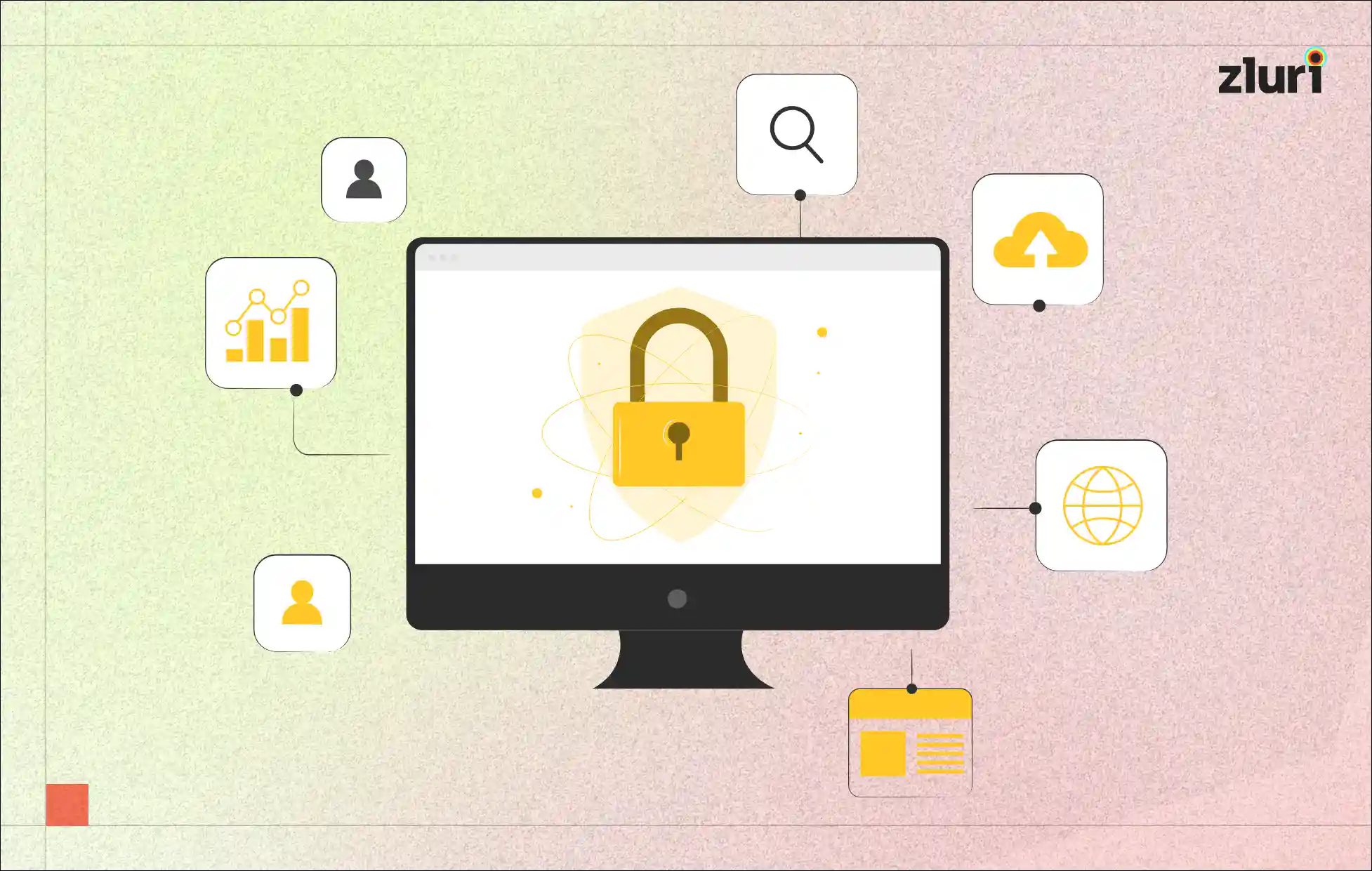Transitioning to the cloud promises enhanced efficiency but introduces a significant challenge: the ease of provisioning resources and granting permissions. Cloud platforms simplify granting access to resources but lack mechanisms to monitor and manage excessive permissions.
In cloud premises, users often accumulate more access privileges than necessary, leaving organizations vulnerable to security risks. This gap between granted and utilized permissions complicates oversight and provides an entry point for malicious actors seeking to exploit unnecessary privileges.
Addressing this issue is paramount for organizations to bolster their cloud security posture and safeguard against potential data breaches. Let’s delve into what excessive permissions are, the reasons, and their consequences.
Excessive Permissions: An Overview
Excessive permissions refer to permissions or privileges granted to an entity (such as a user, application, or system) that go beyond its actual requirements or needs. These permissions allow an entity to access or perform actions it does not need to fulfill its intended purpose.
For example, granting regular users administrative privileges on a computer system gives them excessive permissions. This allows them to make changes that are meant to be restricted to system administrators only.
Individuals or teams with oversight of sensitive data and systems are responsible for managing permissions. This includes IT admins, DevOps personnel, system architects, and security officers. These professionals are tasked with regulating access rights and determining who can access specific data, when they can access it, and what actions they can perform with it.
By managing permissions, they uphold system integrity and mitigate the risk of accidental or malicious data misuse. Let’s move on to the myriad reasons contributing to the proliferation of excessive permissions and their consequences.
Reasons for Excessive Permissions

Here are some key reasons that contribute to the prevalence of excessive permissions:
1: Lack of Role-Based Access Control (RBAC)
Role-based access Control (RBAC) systems are designed to align permissions with users' roles within an organization. Without RBAC, permissions may be granted on an ad hoc basis, resulting in overprivileged accounts.
For instance, in a company without RBAC, a junior employee might have access to sensitive financial data that is unnecessary for their role. This leads to an increase in the risk of data breaches or misuse.
2: Overly Permissive Defaults
Default settings in software or systems often come with pre-configured permissions that may be overly permissive. If these default settings are not properly configured, they can inadvertently grant users more access than necessary.
For example, a content management system may default to granting all users administrative privileges unless explicitly restricted. This potentially leads to unauthorized access and data manipulation.
3: Manual Permission Granting
Human error is a common factor in granting permissions. Admins may inadvertently assign more access rights than necessary due to oversight or misunderstanding of users' roles.
For instance, an employee's job position may change, but their permissions remain unchanged, allowing them to retain unnecessary access to sensitive data.
4: Legacy Systems
Older systems may lack granular permission controls, relying instead on broad permissions that are applied universally. This can result in excessive access for users who only require limited functionality.
For instance, a legacy database management system may grant all users unrestricted access to modify data, increasing the risk of unauthorized changes or deletions.
5: Inadequate Monitoring and Review
Without regular monitoring and review of permissions granted to users, organizations may fail to identify and correct instances of excessive access. Over time, as users' roles evolve or personnel changes occur, permissions can accumulate, leading to a proliferation of unnecessary access rights.
For example, employees who leave the company may retain access to critical systems if their permissions are not revoked. This creates a potential security risk.
Consequences of Excessive Permissions

Excessive permissions within an organizational framework can result in a range of significant consequences, including:
1: Increased Risk of Data Breaches
Excessive permissions expand the attack surface of an organization's systems and data repositories. This broadened attack surface provides malicious actors with more opportunities to exploit vulnerabilities and gain unauthorized access to sensitive information.
For example, if a junior employee has access to customer databases containing personally identifiable information (PII) without a legitimate need, it increases the likelihood of a data breach. This exposes sensitive customer data to unauthorized parties.
2: Insider Threats
Employees with excessive permissions are at a higher risk of becoming insider threats, either intentionally or unintentionally. With access to more data and system functionalities than necessary, these employees may misuse their privileges for personal gain and cause security incidents.
For instance, an employee with unrestricted access to financial records might attempt to steal confidential information or manipulate financial data. This poses a significant risk to the organization's integrity and financial stability.
3: Compliance Violations
Excessive permissions can lead to non-compliance with regulatory requirements, such as the General Data Protection Regulation (GDPR), Health Insurance Portability and Accountability Act (HIPAA), or Payment Card Industry Data Security Standard (PCI DSS).
Regulatory bodies mandate the principle of least privilege to ensure that organizations adequately protect sensitive data and limit access to authorized personnel. Failure to adhere to these regulations due to excessive permissions can result in severe penalties, fines, or legal consequences.
For example, a healthcare organization that grants unauthorized access to patient medical records violates HIPAA regulations and could potentially face hefty fines and legal sanctions.
4: Business Operations Disruption
Unauthorized access or misuse of permissions can disrupt business operations, leading to downtime, loss of productivity, or financial losses. For instance, if a hacker gains unauthorized access to a critical system due to excessive permissions, it could result in system outages, rendering essential services unavailable to customers.
Similarly, if an employee accidentally deletes important files or modifies crucial system configurations due to excessive permissions. This could lead to operational disruptions and financial consequences for the organization.
5: Reputational Damage
Data breaches or security incidents resulting from excessive permissions can severely damage an organization's reputation and erode customer trust and confidence. News of a security breach involving unauthorized access to sensitive customer data can tarnish the organization's image, leading to negative publicity and loss of business opportunities.
Customers may lose faith in the organization's ability to safeguard their information, resulting in decreased customer loyalty and potential churn. For example, a financial institution experiencing a data breach due to excessive permissions may lose customers and damage its brand reputation.
Common Scenarios where Excessive Permissions tend to occur
Excessive permissions pose a significant risk within organizations, referring to situations where individuals, groups, or system accounts possess more access rights on IT platforms than necessary for their respective roles. This heightened access increases the vulnerability of the organization to potential compromises.
Adhering to the principle of granting minimal necessary permissions is crucial to mitigating these risks—a practice known to save time and money.
Here are common scenarios where excessive permissions tend to occur:
1: Vendor or Third-Party Access
Organizations often grant external vendors or third-party service providers access to their systems or networks for collaboration or support services. However, without proper oversight, these external entities may be provided with more permissions than necessary, introducing vulnerabilities in the organization's infrastructure.
Failure to monitor and limit the access of external parties can result in unauthorized access, data breaches, or exploitation of system weaknesses. This highlights the importance of implementing robust controls and periodic user access audits to ensure that third-party access rights are limited to what is essential for their designated tasks.
2: Organizational Growth and Access Permissions
As organizations grow, they often experience a phase where there is a scarcity of IT personnel, leading to the undertaking of multiple roles to meet diverse demands. Over time, when new people join, they usually get the same access rights as those before them.
This means that as the company grows, more people will have access to resources they might not need.
This can be risky because it makes the company more vulnerable to hackers or mistakes that could cause problems. So, it's important for companies to monitor who has access to what and ensure that they have only what they need to do their jobs properly.
3: Uniform Admin Authority in IT Security Management
Some companies choose to simplify their IT operations by granting all staff full administrative privileges. This means everyone has access to make significant changes to the system without needing special permission each time.
While this might seem like a time-saver, imagine if every employee in a company had access to all the company controls, including shutting down vital devices. It could lead to chaos if not managed carefully.
Similarly, giving everyone admin rights can create vulnerabilities. For instance, an employee might accidentally delete important files or install harmful software without realizing the consequences. Therefore, it's essential for organizations to weigh the convenience of streamlined access against the potential risks it poses to their security.
4: Permission Creep in Organizational Security
Permission creep refers to the buildup of excessive access permissions within organizations despite having strong security measures in place. This often happens when extra privileges are given to employees during emergencies but are not revoked once the crisis is over.
Without proper monitoring and periodic checks, this can lead to unnecessary permissions, making the organization vulnerable to security breaches.
Let's say a company faces a cybersecurity incident where an employee needs elevated access to quickly resolve the issue. Once the problem is solved, the employee retains these elevated permissions, creating a situation where access rights gradually accumulate over time. This permission creep could lead to unauthorized access and compromise the organization's sensitive data.
Mitigating the reasons and consequences associated with managing excessive permissions requires a multifaceted approach, often including implementing access management solutions.
How Access Management Helps with Permission Management
By implementing an access management solution, your team can streamline the permission management process. Your team can centrally control multiple employees' access from a single interface and also have complete control over employees' access rights. This will help reduce the likelihood of mismanagement of access and minimize security branches.
So, to benefit from the access management system, you can consider implementing Zluri. Why Zluri? What advantages does it offer?
Zluri offers an access management solution that enables your team to ensure no individual holds unnecessary or excessive access permissions that are not required for their role. How does it ensure that?
It enforces access control policies like RBAC, SoD, JIT, and more, to limit and restrict employees' access rights to what's necessary.
Also, this advanced tool conducts periodic access reviews to evaluate and ensure every employee has the right access to the right resources, be it SaaS apps, data, or systems. If any employee holds unauthorized access, your team can run an automated deprovisioning workflow to promptly revoke the access. This helps safeguard critical data from potential security breaches.
In short, advanced solutions like Zluri access management can be a great tool to control excessive permissions within your organization. This will help maintain a secure and well-governed access environment.









.svg)














